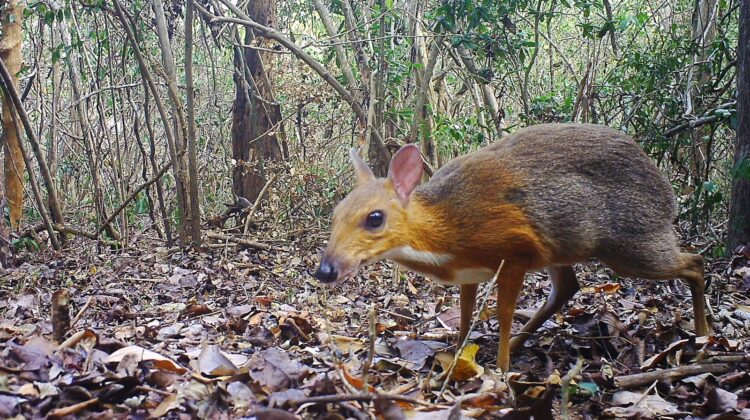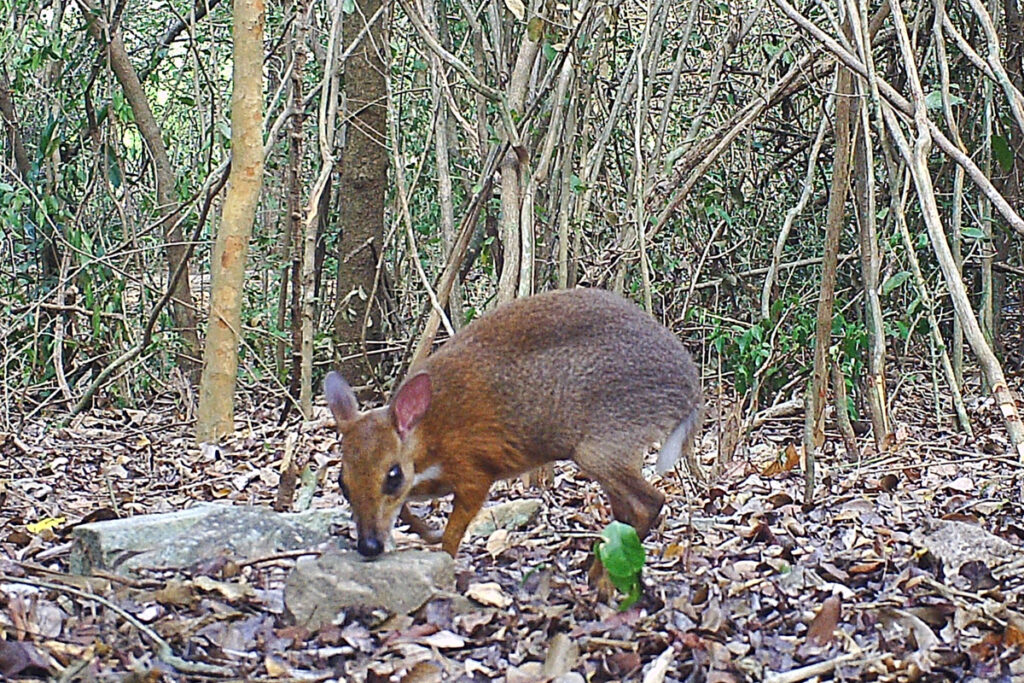
In the heart of Vietnam, a forest shrouded in mystery has long been plagued by the haunting silence of “empty forest syndrome,” a phenomenon where the vibrant beauty of a tropical ecosystem exists, but its inhabitants have vanished. Scientists, however, embarked on a journey to unravel this enigma and stumbled upon a creature that hadn’t graced their lenses for nearly three decades—the elusive silver-backed chevrotain.
Andrew Tilker, a scientist with Global Wildlife Conservation, and his team of researchers embarked on a quest to find this rare deer-like mammal, navigating the challenges of the illegal wildlife trade that had depleted Vietnam’s forests. The silver-backed chevrotain, last documented in 1990, had become a symbol of the “lost” species, not officially declared extinct but seemingly vanished from scientific records.

Global Wildlife Conservation initiated the “Search for Lost Species” initiative, seeking to shed light on species like the silver-backed chevrotain that remain elusive to science. Despite having only recorded five specimens, all of them deceased, researchers were determined to locate a living population. The first four specimens appeared in 1910, and the final one, killed by a hunter, surfaced in 1990.
The turning point came in March 2017 when the research team brainstormed about potential habitats. Focusing on the dry coastal forest in southern Vietnam, a departure from the wet evergreen forests, they interviewed local residents, delicately inquiring about sightings of the silver-backed chevrotain. The information gathered led to the deployment of motion-activated cameras, or camera traps, strategically positioned in the identified locations.

Months later, the team collected the cameras and sifted through the photos, unveiling the silver-backed chevrotain in all its glory. The species, previously thought to be on the brink of extinction, appeared in 208 separate instances, captured on camera in the daylight, usually alone. These photographs marked the first scientific evidence of the creature’s existence in almost three decades.
The silver-backed chevrotain, indigenous to the Annamite Mountains of Vietnam and Laos, holds significance beyond its rarity. Tran Van Bang, a co-author of the study, emphasized the importance of learning more about such unique species to draw attention and resources towards threatened ecosystems. However, concerns about the potential repercussions of publicizing the rediscovery arose, with conservationists fearing increased demand from hunters.

Diana Bell, a professor of conservation biology, raised a poignant question about the ethical dilemma faced by conservation biologists. While concealing the exact location of the silver-backed chevrotain, there remains a concern that even minimal information may inadvertently attract hunters.
Tilker acknowledged hunting as the most immediate threat to species like the silver-backed chevrotain. Even if protected from hunting, these creatures still confront perils like climate change and habitat destruction. However, the discovery marks a crucial step towards conservation, as knowledge of their existence is fundamental to their preservation.

In the words of Tilker, “Until we find the species and start learning something about it, it’s not possible to do any sort of conservation. It’s hard to protect a species if you don’t know if it still exists.” The silver-backed chevrotain, once lost in the shadows, now stands as a symbol of hope for the preservation of biodiversity in the hidden wilderness of Vietnam.

Leave a Reply